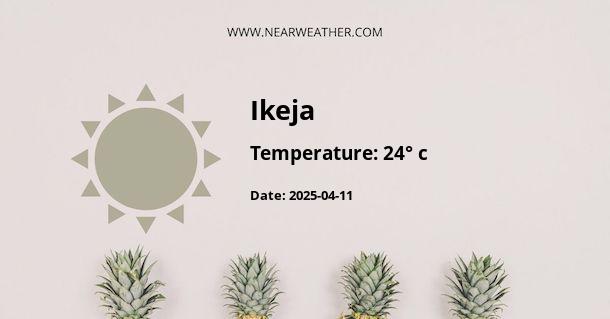Ikeja, Nigeria: Climate and Weather Year Round
Ikeja is a bustling city located in the Lagos State of Nigeria. As the capital of Lagos State, it is not only a major economic hub but also a popular destination for tourists and business travelers. Understanding the climate and weather patterns of Ikeja is essential for those planning to visit or settle in this vibrant city. In this article, we will explore the climate and weather conditions in Ikeja throughout the year.
Geographical Location
Ikeja is situated in the southwestern part of Nigeria, near the coast of the Gulf of Guinea. Its geographical location plays a significant role in shaping its climate and weather patterns. The city lies close to the equator, experiencing a tropical monsoon climate.
Temperature
Ikeja has consistently warm temperatures throughout the year, with little seasonal variation. The average annual temperature ranges from 26°C (79°F) to 32°C (90°F). The hottest months are typically February and March, with temperatures often reaching above 35°C (95°F). The coolest months are usually July and August, with temperatures dropping to around 23°C (73°F) at night.
Despite the warm climate, Ikeja experiences some relief from the heat due to its proximity to the coast. The coastal breeze provides a slight cooling effect, making the temperatures more bearable.
Rainfall
Ikeja experiences a distinct wet and dry season throughout the year. The wet season typically lasts from April to October, while the dry season spans from November to March. The highest amount of rainfall occurs between May and July, with heavy downpours and occasional thunderstorms.
During the wet season, Ikeja receives an average annual rainfall of around 1,500mm (59 inches). The rain helps to cool down the temperature and provides much-needed water for agriculture and other activities. However, it is essential to note that heavy rainfall can sometimes lead to localized flooding in low-lying areas.
Sunshine and Humidity
Ikeja enjoys a significant amount of sunshine throughout the year. The city experiences an average of 2,800 hours of sunshine annually, which translates to approximately 7-8 hours of daylight per day. The sunniest months are usually between November and February, while May and June tend to be slightly cloudier.
Humidity levels in Ikeja are generally high due to its coastal location and proximity to the Atlantic Ocean. The average relative humidity ranges between 70% and 90% throughout the year. The highest humidity levels are experienced during the wet season, making it feel warmer than the actual temperature.
Climate Adaptation
Given the warm and humid climate, it is important for residents and visitors to adapt accordingly. Here are some tips for coping with the climate in Ikeja:
- Stay hydrated by drinking plenty of water.
- Wear lightweight and breathable clothing to stay cool.
- Use sunscreen to protect your skin from the sun's rays.
- Seek shade during the hottest parts of the day.
- Be prepared for sudden rain showers by carrying an umbrella or raincoat.
Conclusion
Ikeja, Nigeria, has a tropical monsoon climate characterized by consistently warm temperatures, distinct wet and dry seasons, and high humidity levels. Understanding the climate and weather patterns of Ikeja is crucial for planning activities and adapting to the local conditions. Whether you are visiting for business or pleasure, being prepared will ensure a comfortable and enjoyable experience in this vibrant city.
A - Ikeja's Latitude is 6.594220 & Longitude is 3.337480.
A - Weather in Ikeja is 24° today.
A - Climate Conditions in Ikeja shows few clouds today.
A - Humidity in Ikeja is 94% today.
A - Wind speed in Ikeja is 5.54 km/h, flowing at 10° wind direction. today.
